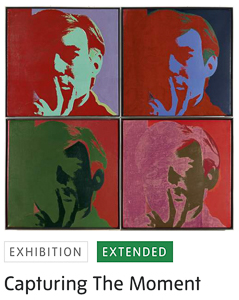
One of the many apocryphal tales of Picasso holds that he conceived cubism following an opium induced dream in which the role of the painter was relentlessly belittled by the unstoppable rise of photography.
Certainly, for portraiture and similar images, photography is a cheaper and more convenient means of creating a record. However, the Tate Modern’s “Capturing the Moment” exhibition looks at photography as an art form that evolved symbiotically with the most exciting movements of 20th and 21st century art.
Click the image above to visit the Tate’s website or click below to see more
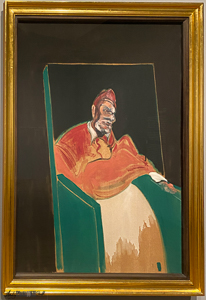
One should visit this exhibition because the pictures presented are jaw-dropping examples of the most important work of the last 100 years, including: an early version of Francis Bacon’s Screaming Pope (left), his triptych portrait of Lucian Freud, as well as a couple of paintings by Freud himself; Picasso’s Weeping Woman portrait of Dora Maar, closely associated with the iconography of his Guernica masterpiece, a painting that Maar famously documented photographically; Dorothea Lange’s Migrant Mother which is one of the best known documentary photographs of all time, in this case showing the suffering caused by the great depression in rural USA. … this is just the first few paintings and photographs in the first room.
It is a compact exhibition with little padding. So every work is worthy of attention. Room 1 continues with Cecily Brown’s 1999 Trouble in Paradise, a disturbing neo-expressionist combination of photo-realism within an abstract and surreally erotic work. One of Georg Baselitz’s iconic upside-down paintings that force the viewer to concentrate on the artists mark making rather than its subject; War by Paula Rego featuring people with rabbit heads, inspired by a photo of the Iraq war; the psychological cubism of George Condo’s Mental States; and Alice Neel’s unsettling Puerto Rican Boys on 108th Street.
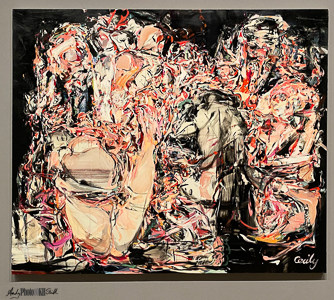
Contrast the above with very large photographic prints by Andreas Gursky (ArtFact’s most successful living photographer), image below; and Hiroshi Sugimoto’s contemplative monochrome seascapes.
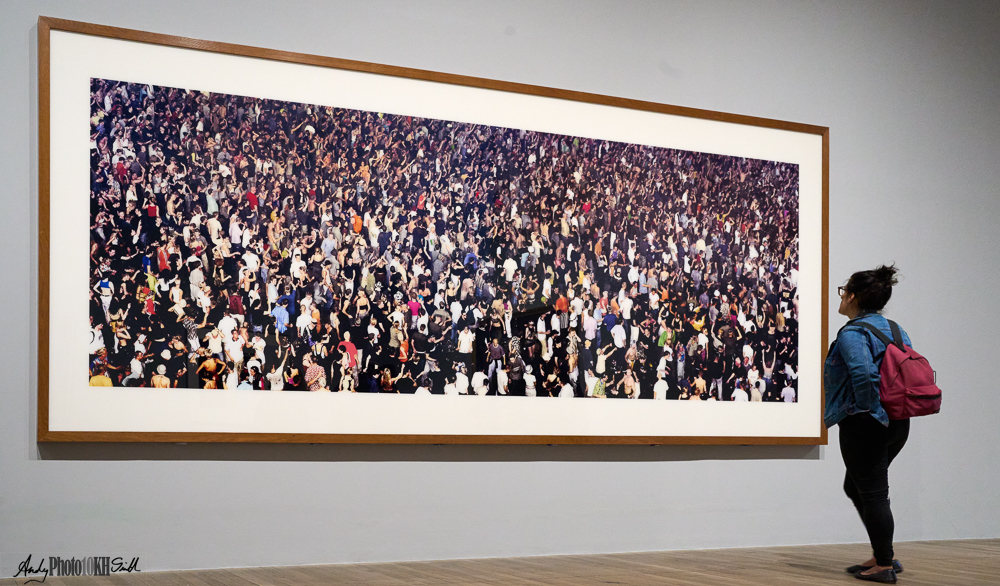
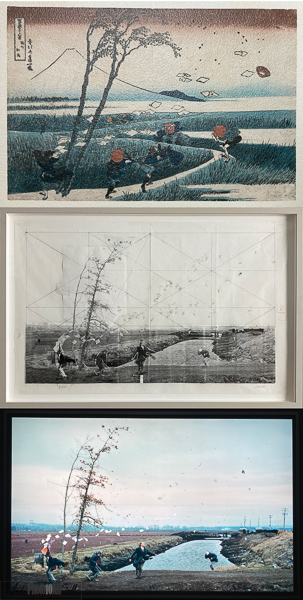
One of the smaller rooms is devoted to Jeff Wall’s 1993 A Sudden Gust of Wind (after Hokusai), which is a photographic reinterpretation of Katsushika Hokusai’s, 1832, Travellers Caught in a Sudden breeze at Ejiri (part of the Thirty Six Views of Mount Fuji series, which also features the Great Wave). The room shows some of the sketches and analysis that the artist used to position actors to recreate the scene. A hundred or so individual photos were combined to create the final image.
Left:
- Top – Hokusai’s original
- Middle – sketch
- Bottom – Jeff Wall’s final image
The list goes on with fabulous and famous work by David Hockney, Andy Warhol, Gerhard Richter, Peter Doig, Luc Tuymans, and many more
Right, The Shore 2014, by Luc Tuymans
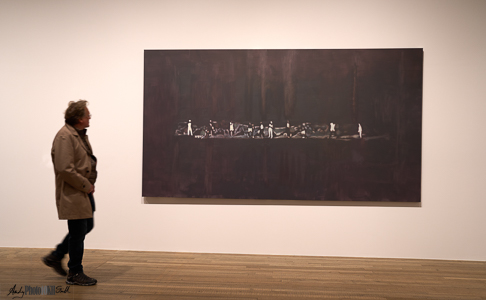
Other reviewers have been less enthusiastic, but as a photographer with an interest in modern and contemporary art, I found it inspirational. I have now visited seven times.